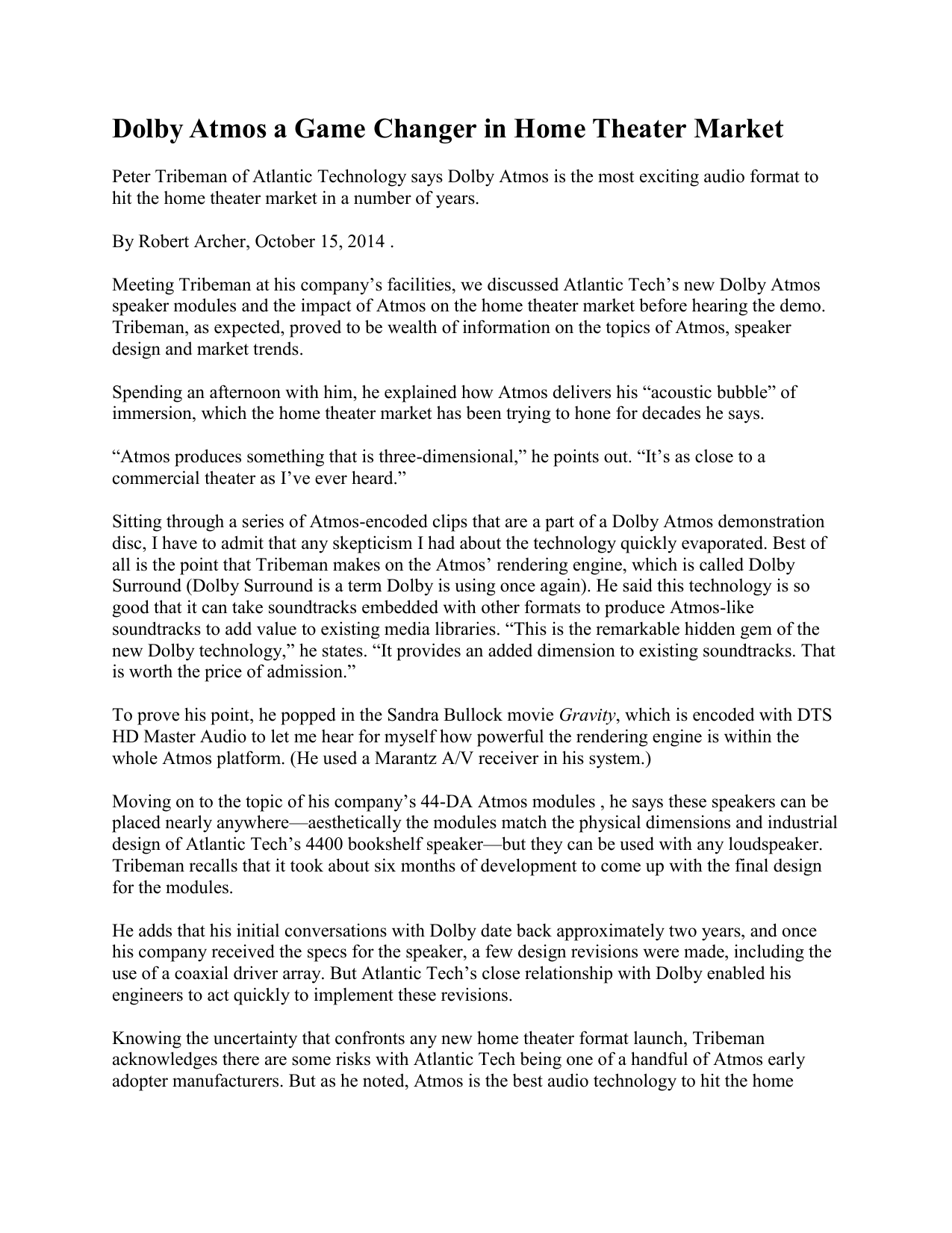

Smartly, Dolby has waited to take that step until there were more Atmos movies (there are 150 so far), and so that more people have had a chance to experience the system in the theater. When Atmos was first announced, everyone assumed it would make it into the home. The Atmos system can support up to 128 of these different sound objects in any one scene at a time. The Atmos decoder at the theater, knowing what speakers it has to work with and where they are, interprets the location metadata in the Atmos feed, and places the sound exactly where the sound designer intended, regardless of the number of speakers in the theater, or their placement (within reason, of course).
#Dolby atmos demo 2014 software
Instead of "this sound to rear-right speaker," the sound designer tells the Atmos software to place the sound "object" in a specific area, like "rear corner, halfway up the wall." It adds a fullness, a hemisphere of sound, if you will.Ītmos is able to add so many more channels by doing away with the "channel" concept altogether. Instead of sounds occurring in a flat disc around your head, they're able to have height, even if the sound isn't specifically coming out of the height speakers. More than just adding a new way for sounds to "whoosh" overhead, the height speakers add a dimension to the sound (obviously) that you didn't notice was missing.
#Dolby atmos demo 2014 pro
In addition, Atmos adds height speakers, but unlike Dolby Pro Logic IIz, they are designed to appear discretely in the mix and not be simply "matrixed" from the front channels. This, of course, is exactly what the promise of surround sound was supposed to be from the start.

It's less like you're listening to individual speakers in a room, and more just being surrounded by sound. The result is a far more seamless surround effect. Even better, sweeps of sound (a helicopter flying around, say) can be far smoother, passing from speaker to speaker instead of from array to array. So, for example, instead of a sound occurring somewhere over your shoulder, the sound designer can place it precisely at your 8 o'clock. The array (multiple speakers) was necessary, given the size of the theater and the number of ears therein.Ītmos changes that, adding the ability to individually address all of the speakers in a theater - or at least, many more of them. The idea was the same: sound > speaker channel. In the theater, that same sound might have been sent to an array of speakers. In your home, a 5.1 mix might send a surround-sound effect to a rear speaker. There were a certain number of channels, and those channels were sent to specific speakers.
#Dolby atmos demo 2014 movie
Movie sound, until recently, has been mixed very similarly for the cinema to the way you hear it at home.


 0 kommentar(er)
0 kommentar(er)
